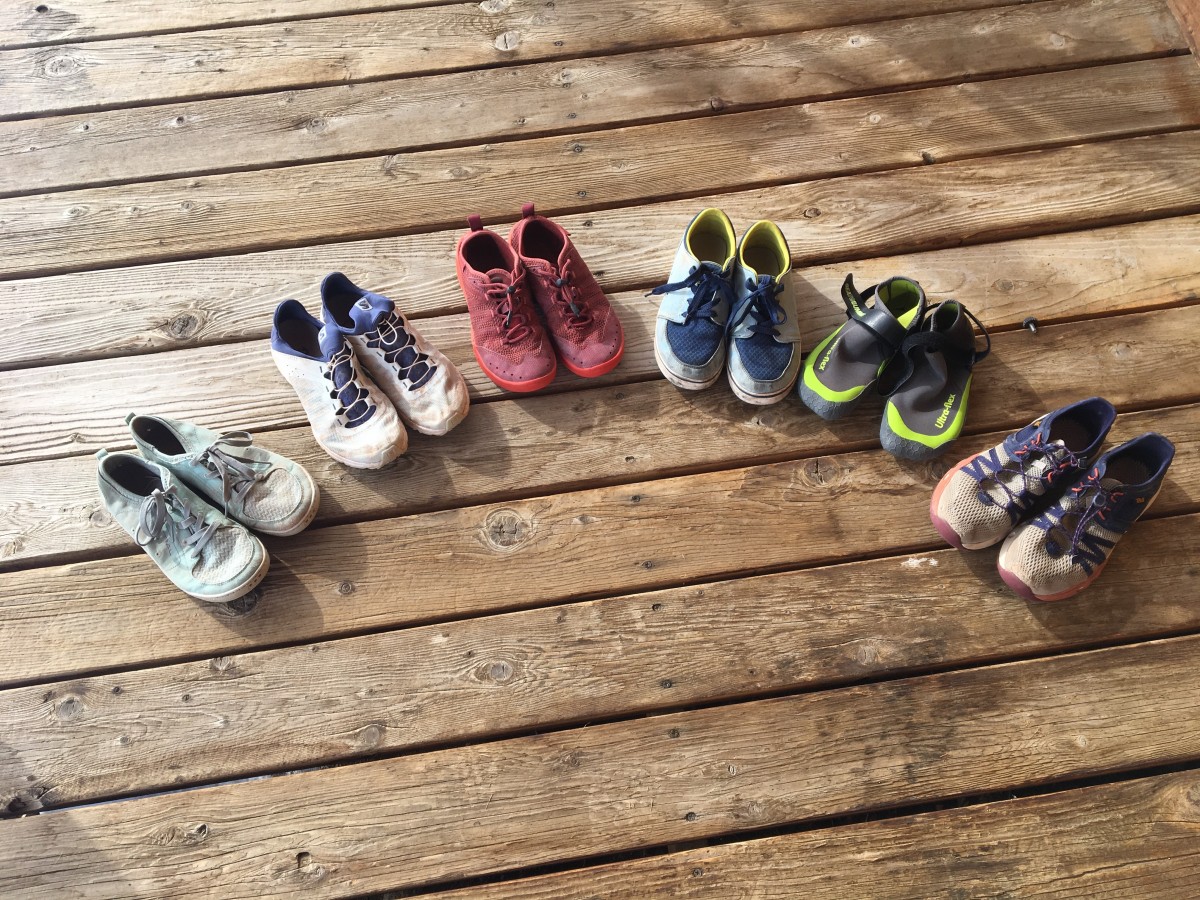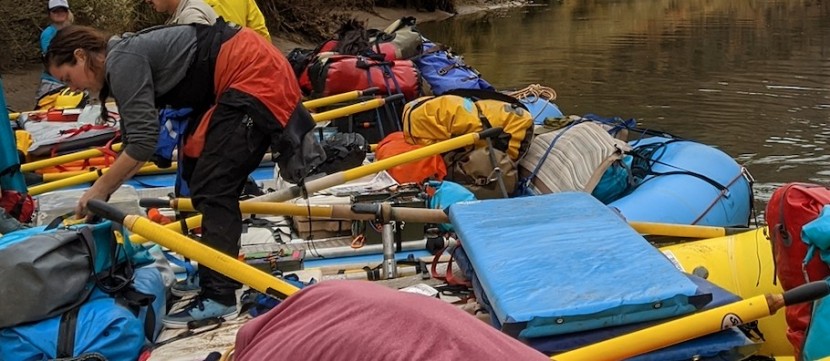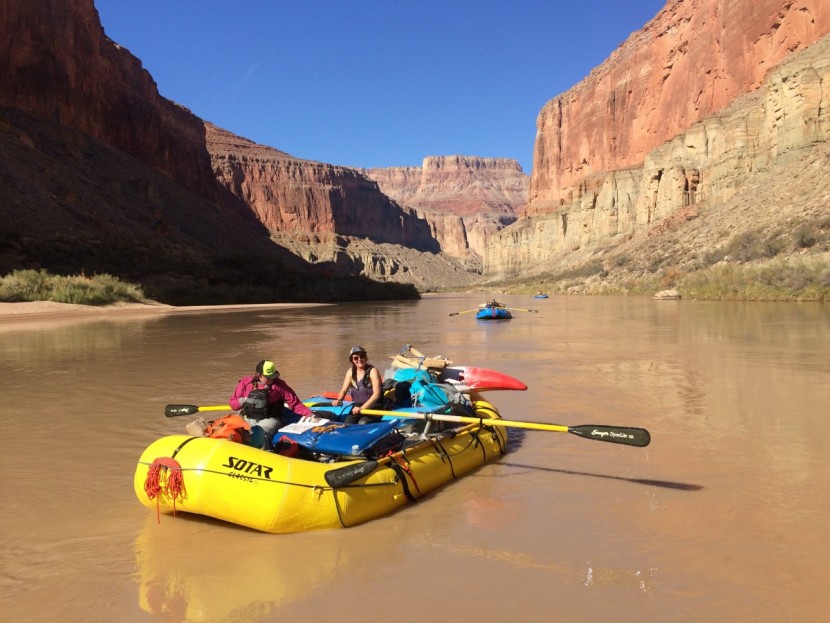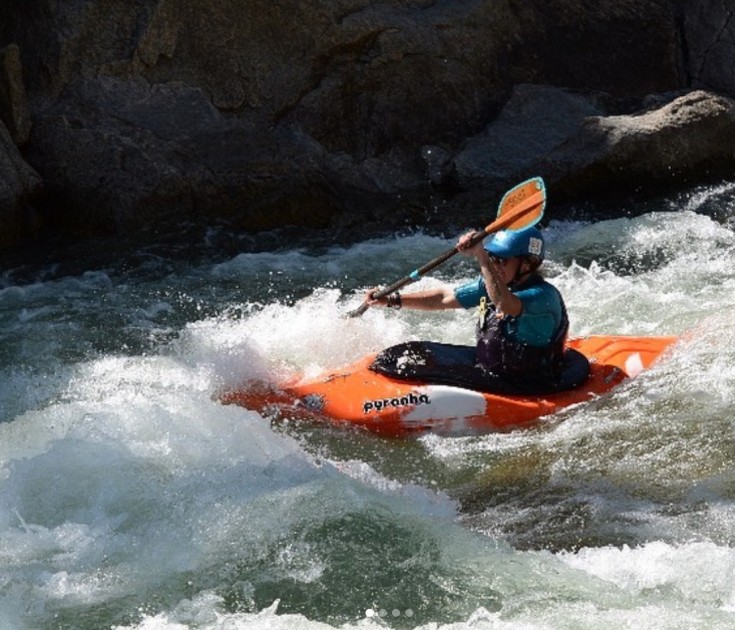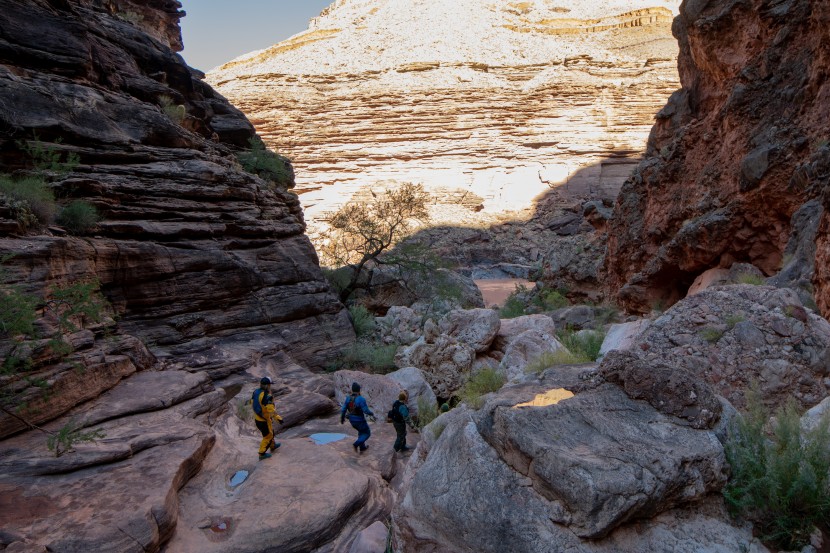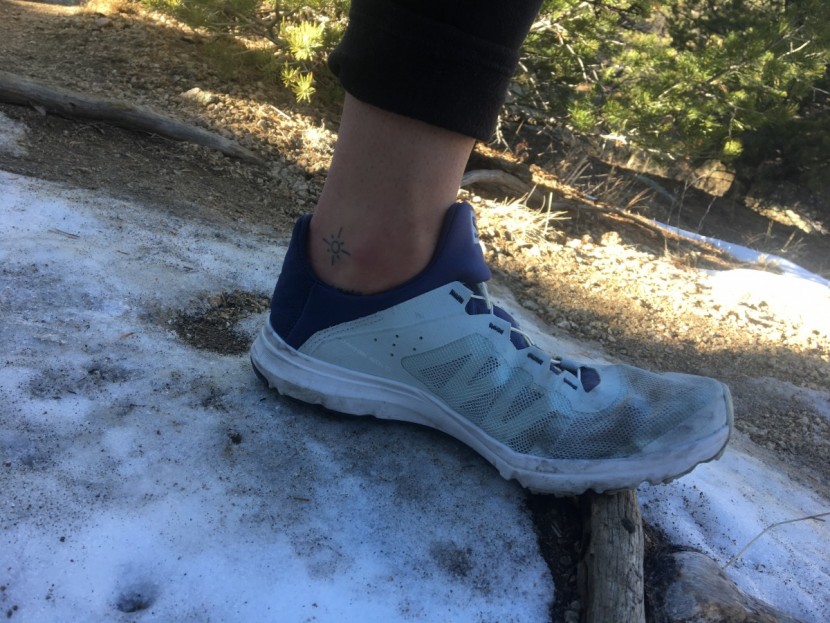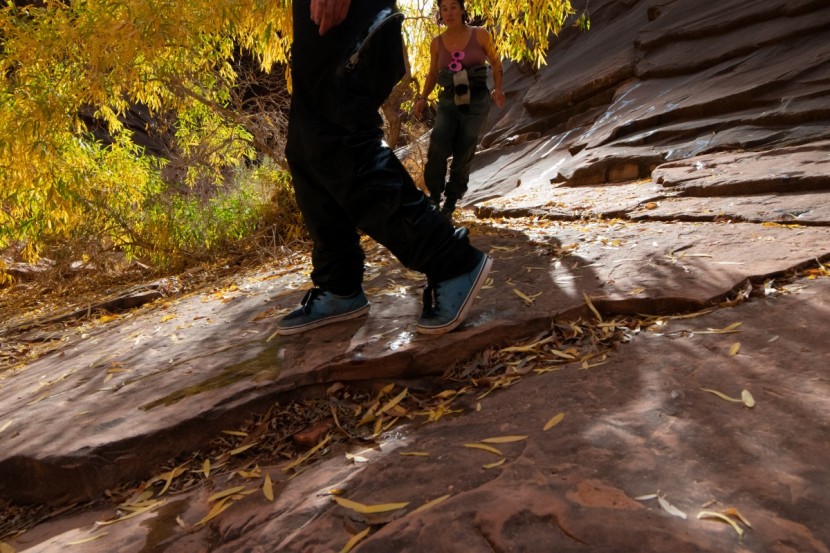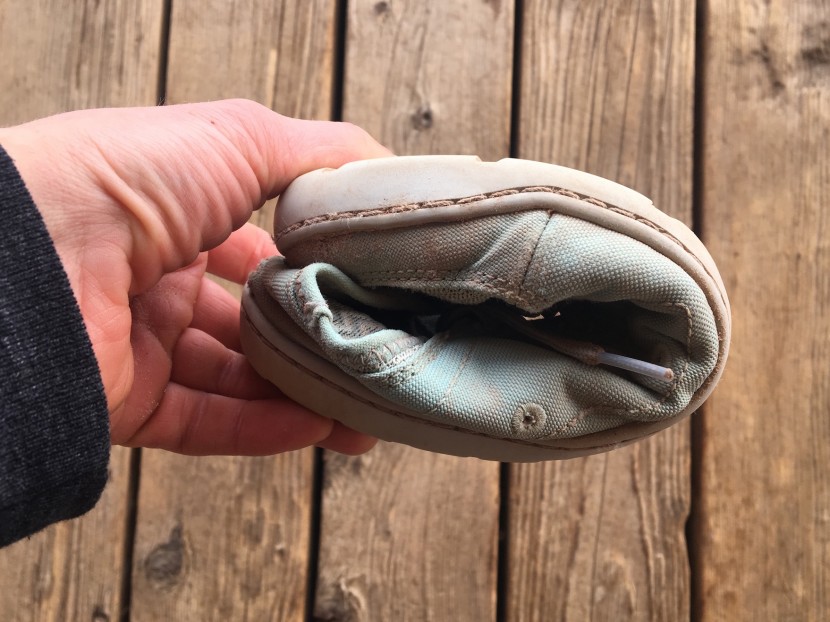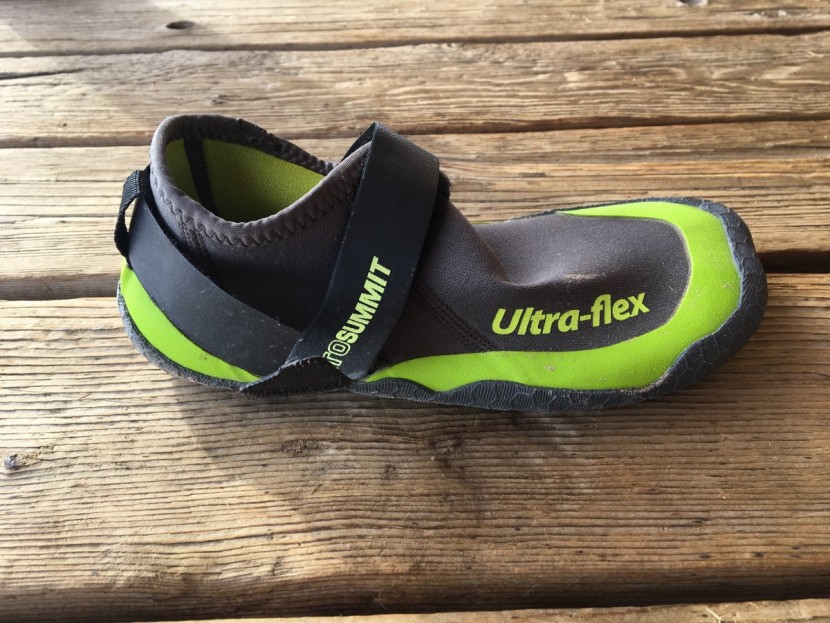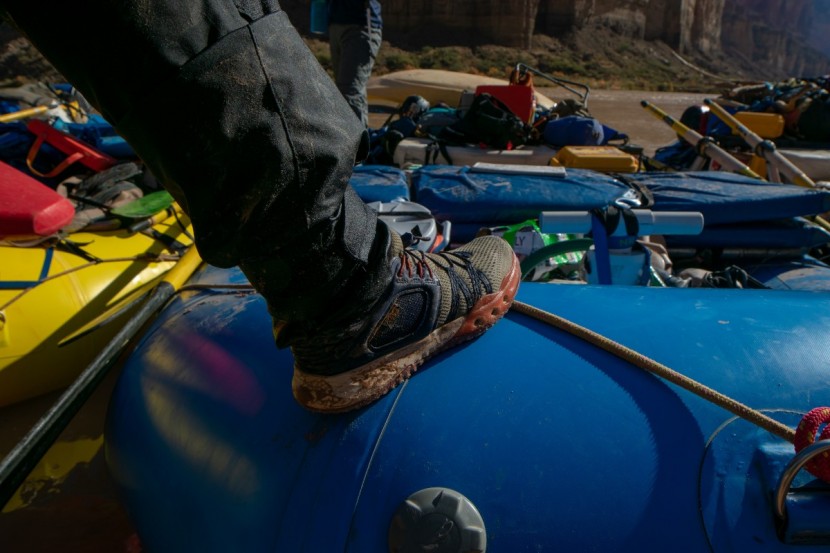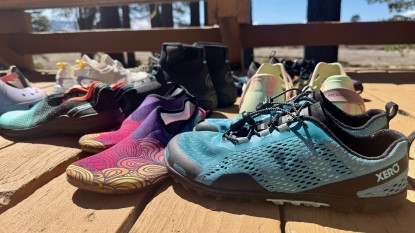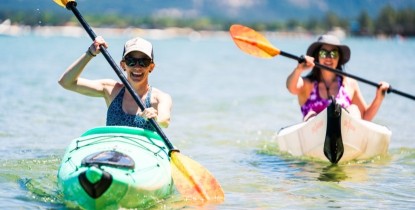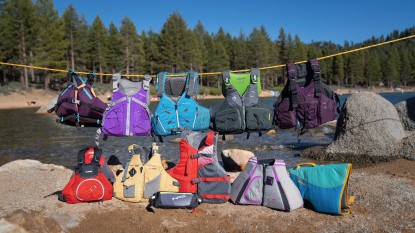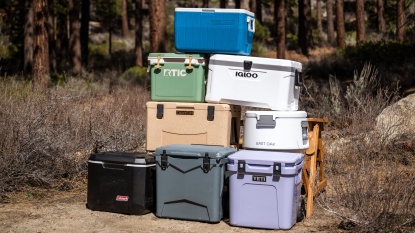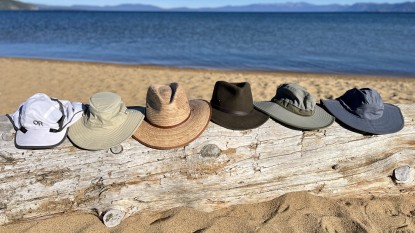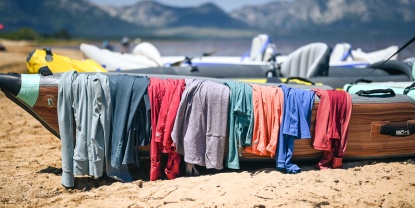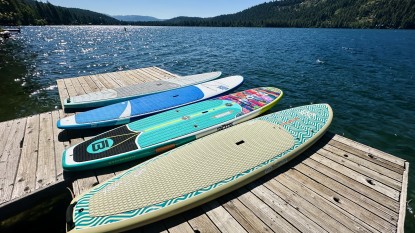For those of us who spend a lot of time getting our feet wet, a regular pair of shoes just won't cut it. We need shoes that drain well, dry quickly, and in some cases allow room for insulative layers. Since we're often navigating slippery surfaces, we need specialized tread to help our feet stick. Most of all, we want our feet to be comfortable. Soggy, pruney feet can put a huge damper on what otherwise would be a great day on the water. For kayakers, rafters, SUPers, canyoneers, or even just someone who likes to splash through puddles on a run, a good pair of water shoes can make your days outside all the better.
Do I need water shoes?
Shoes specific to water sports are imperative when regular shoes, bare feet, or sandals don't provide the extra boost you need to perform with confidence and security. Perhaps you need more traction to navigate slippery rocks on your rafting trip, or maybe more protection and drainage for your toes while running on muddy paths. In these cases, water shoes are likely to be a better choice. Furthermore, many water-specific shoes are tailored for cold days on the water, with more adjustability or quick-drying materials than a street shoe.
Whitewater boating
For fast-moving, frothy water, having a shoe that stays secure and offers good traction is imperative. In the unfortunate event that you find yourself out of a boat engaging in a swim, you might encounter sharp rocks or sticks that can injure you. In the case you're in the water for an extended period, hypothermia could even be a concern. The last thing you need is to finally get yourself to shore or a place of safety only to find yourself barefoot, especially on a cold day. Furthermore, you're likely to be wearing your shoes on shore for scouting, portaging, or scenic side hikes. For these scenarios, a water shoe is more protective and supportive than a sandal. They will also give you much better traction and sensitivity than a running or street shoe.
Running or hiking in wet environments
Shoes can improve the happiness of your feet on muddy trails or creek crossings. You'll want to be able to splash powerfully through puddles or over slick logs without the fear of injury or discomfort in a remote place. For this, the extra traction provided by a water-specific shoe can enhance your performance. Furthermore, there's nothing worse than getting your feet wet ten minutes into a hike and spending the rest of your day with uncomfortable, pruny feet. The shoes we tested drain more quickly through the soles and often feature materials that will dry quickly.
Types of water shoes
Shoes will differ in flexibility and construction materials based on their intended sport. A more flexible and thinner bootie works best for boating, while a stiffer shoe with a thicker outsole is best used for hiking through wet terrain.
Booties
Usually made of neoprene with a rubber outsole, booties are one of the warmest and most comfortable options for sports where you're unlikely to spend much time standing or walking. They're made to fit like a sock, the neoprene using your own body heat to keep your feet warm. They are the most flexible and lightweight shoes in their category.
Booties function best for boating or swimming. While their flexibility is a boon for these activities, they lack the durability and support for longer hikes. Their outsoles will wear down more quickly than a shoe with stiffer mid and outsoles.
Low-profile kayaking shoes
With more protection and stability than a bootie, low-profile kayaking shoes remain quite flexible and sensitive. Their thin soles are ideal for boating, where your feet need to fit into a kayak, but they also perform on land for scouts or short hikes.
Their general lack of lugs increases your foot's surface area contact, allowing for more sensitivity. Their materials are usually mesh and feature holes for maximum drainage. They're generally low-cut for ankle flexion. Many of these shoes are also offered in a mid-height boot that offers more support (but obviously removes the ankle flexion advantages of the lower profile).
Water-focused running or hiking shoes
These shoes are the intermediary between regular running or hiking shoes and traditional kayaking shoes. They will generally drain better than a non-water-specific shoe and feature stickier rubber, but retain the support and sensitivity of a regular shoe.
These shoes are great for running through puddles and mud, but lack the traction and flexibility of a bootie or low-profile kayaking shoes. For trail runners looking to splash confidently through conditions others might avoid, these are a good choice. Yet they're not quite sticky or sensitive enough for more water-specific activities like boating.
Boots and canyoneering shoes
While we don't cover this particular genre of shoes in our testing, they're important to mention. Usually much burlier than a kayaking shoe with a mid-height cut, their uppers will be much thicker and more durable, prioritizing warmth over drainage. Their rubber is stickier and thicker for handling scrambling over rough, wet terrain. The protection this rubber provides helps your shoes handle jumping, sliding, rappelling, scrambling, and boulder-hopping. Many canyoneers reach for their approach shoes for this use, since they have very sticky rubber outsoles.
Key Performance Considerations
Through their years of passionate pursuit of water sports, our experts have identified six critical areas of performance for water shoes (discussed below). No shoe can claim to be the best in every single area, but for general applications, the shoes that balance performance across the board tend to be our favorites. Specific-use products might hit the niche you are seeking, though, without having the all-around competence of versatile models.
Comfort
Shoes should fit snugly around your whole foot while wet and dry. Water shoes should be made of materials that can withstand repeated cycles of wetting and drying without breaking down. They should drain well to prevent squishy, unpleasant feet and annoying blisters. Furthermore, you should consider how much you'll be wearing your shoes on dry land. If you like water-supported hiking or anticipate numerous scouts or portages, a shoe with more cushion and support will suit your needs better than a low-profile kayaking shoe or neoprene bootie.
Warmth
Usually, your feet being too cold is more of a concern than them being too warm. You can always put your feet in the water or take your shoes off temporarily to cool them off, but cold feet can cause a lack of feeling and can really ruin your day. If you're a fair-weather boater who revels in the town surf wave, a neoprene bootie is the best option. The neoprene should be insulative enough for your needs, and you won't require the added cushion needed for hiking and scouting. If you're planning on having your feet in the water year-round or traveling to colder locales, you might consider purchasing a shoe a half size larger than you normally would so you can effectively add warm layers. At least ensure you buy a shoe that is adjustable.
Traction
Excellent traction on a variety of surfaces can set a water-specific shoe apart from a regular shoe. Your shoe sticking to a wet raft or slippery rocks can mean the difference between a successful scout or an injury. Water shoes will feature an especially sticky rubber for adhering to flat, hard surfaces. Some will add siped rubber to dig into soft surfaces. Here again, it's best to think about how you'll predominately be using your shoes. For a rafter looking for superior traction navigating wet tubes and rocky shores, you'll want something with sticky rubber without as much worry about the depths of your shoe's lugs. But if you're more of a jack of all trades who plans on using the shoes as much on the water as for hiking, you'll want something with deeper lugs. Lack of lugs increases the surface area of your foot on hard surfaces, which is what you want for ultimate traction in those environments. Deeper lugs will allow your feet to dig into mud and sand without feeling like you're walking in place.
Flexibility and Sensitivity
The ability to feel inconsistencies under your feet can help you keep your balance and stride more confidently over rough terrain. The amount of flexibility and sensitivity you want in a shoe is dependent on your chosen water sport. For kayaking, you might want a more flexible, low-profile shoe to get into the cockpit. A thick upper and outsole are less important since ideally, you'll be staying in your boat for the majority of your adventure. A shoe used for wet side hikes or creek walking will need to be stiffer. Look for thicker uppers and denser, heartier soles. You'll also want to consider how much time you'll actually be spending on your feet versus sitting. If you'll be walking around or standing a lot, you may need to sacrifice flexibility and sensitivity for more cushion and arch support. Something like a trail-running compatible shoe will suit your needs better in this case.
Durability
Find the right balance for your chosen sport: if you expect to be in rocky, abrasive environments, pick something with thicker uppers and outsoles. You'll want the protection of materials that are less immune to punctures. If you're kayaking or SUPing, a low-profile meshy shoe will probably fit your needs, something like a neoprene bootie or low-profile kayaking shoe. In these sports, you need more sensitivity that is often compromised in more durable shoes. It's a tradeoff. While a low-profile kayaking shoe may lack the durability of heftier shoes, it is more flexible and sensitive.
Versatility
If you're hoping to use your shoes both on and off the river, a more versatile shoe that functions on dry land and for multiple sports can save you a lot of money. Many water shoes on the market work as running or hiking shoes or are stylish-looking enough to be worn off the water. Furthermore, you may want a shoe that you can wear all day, from the river to a short hike to lounging around camp. For this, look for a shoe with quick drainage and perhaps a mesh upper for ventilation. Make sure the shoe is adjustable enough to add warm layers. On the contrary, if you're a canyoneering purist, it's worth spending a few extra bucks on a more durable shoe with less puncture-prone uppers, since you'll be less worried about how they'll function in other sports.
Protection Versus Sensitivity
You'll want to keep in mind your chosen water sport and whether you value protection or sensitivity. A more sensitive outsole helps with feeling out rocks in murky waters and gives the most contact between your foot and your boat or the ground. These shoes can help with balance and stick better to wet, hard surfaces, but are not conducive to longer hiking or scrambling through extremely rough terrain. Think about how you prefer your other shoes and what you're going to be using your shoes for: are you a playboater who needs incredible flexibility and a low profile, or a hiker who wants to splash their wet terrain with the same support as your hiking shoe?
Versatility Versus Specialization
You can save money buying a more versatile shoe if you're planning to wear it for boating, hiking, and the office. However, for the avid kayaker whose dry land use starts and ends at the put-in and takeout, a neoprene bootie or low-profile kayak shoe is a better choice. Likewise, for the canyoneering enthusiast who wants a shoe that can take a beating and offer incredible protection, a thicker, burlier shoe is a better option than a more middle-of-the-road water shoe.
Warm Layering Considerations
Shoes that are comfortable when adding layers are crucial if you're planning on boating in colder conditions. Often, for summer days in cold water, wool socks will do the trick. It will stay warm when wet. As air and water temperatures lower, you may consider adding a neoprene sock. These come in varying thicknesses; buy a thicker sock for colder water. On the coldest days, if you're lucky, you'll have a dry suit. This will usually feature a Gore-Tex bootie that you'll add layers under and over. Be sure to consider in what kind of environments you're planning on using your shoes and what kind of layers you'll require for personal comfort. Try on your shoes with your intended layers before purchasing.
Fitting Water Shoes
Again, you'll want to think about your shoe's intended use and the type of environmental conditions in which you'll be wearing them. If you're planning to have your feet submerged regularly in cold water, plan for one size up so that you can comfortably add layers like a thick neoprene sock or drysuit. Remember, it's better to be too warm than too cold — you can always dip your feet in the water to cool off, but warming up frigid toes while still on the water can be next to impossible. You may want to consider a shoe with a removable insole to make yet more room in the shoe. Lastly, some shoes, usually neoprene booties, are listed with unisex sizing. In this case, be sure to round down by one shoe size for women's sizing if they are only listed in men's sizes.
Conclusion
Before buying a shoe, be sure to think about your intended use and narrow your options down from there. If you can, try them on first or order from an online retailer with a great return policy, since you may find some models too narrow, wide, or a fit that just doesn't work with your foot. Go with the shoe that feels best and will perform well and enhance your time doing your water sport of choice.

